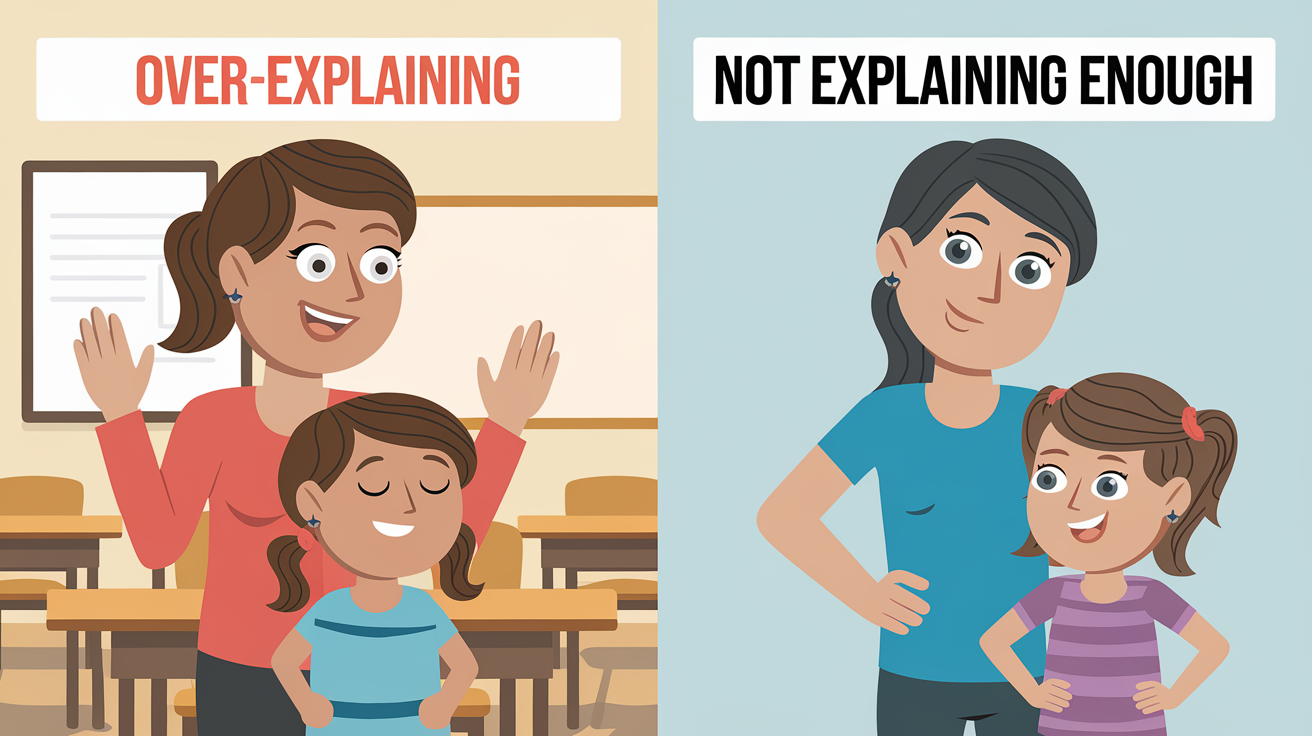Being a new parent can be tough, especially when your baby is upset. This guide has lots of expert tips to help calm your little one. It covers everything from the reasons behind baby crying to the soothing effects of touch and sounds.
The best ways to calm enfants : New tricks
Key Takeaways
- Understand the common triggers for infant distress and learn to read your baby’s stress signals
- Discover the science behind why babies cry and how to address their needs effectively
- Create a nurturing environment that fosters relaxation and comfort for your calm infants
- Harness the power of physical touch and gentle massage to soothe your soothing babies
- Explore the calming benefits of specific lullabies, white noise, and nature sounds
Understanding Why Babies Become Fussy and Upset
As parents, we’ve all faced the tough task of calming a fussy baby. Knowing what makes them upset is key to easing infant stress and finding fussy baby solutions.
Common Triggers for Infant Distress
Newborns and young babies get upset for many reasons. Hunger, tiredness, too much stimulation, and discomfort are common causes. Hunger is a big one, as their stomachs are small and they need to eat often.
Feeling too tired or overwhelmed by their surroundings can also make them cry. Simple issues like a dirty nappy, gas, or skin problems can upset them a lot.
Reading Your Baby’s Stress Signals
It’s important to know when your baby is stressed or overwhelmed. Look for signs like furrowed brows, clenched fists, and pursed lips. Also, watch for body language like arching the back or pulling the knees up.
Learning these cues helps you act fast to comfort your baby before they get really upset.
The Science Behind Baby’s Crying
“Crying is a baby’s way of communicating their needs and distress. It’s the only way they can express themselves until they develop other forms of communication.”
Infant crying is a natural response to discomfort or stress. It’s triggered by the baby’s primitive brain stem. This cry releases stress hormones like cortisol, making things worse if their needs aren’t met.
Understanding this can help parents respond better and calm their baby down.
Creating the Perfect Environment for Baby Relaxation
As parents, we all want our little ones to have a peaceful place to grow. The surroundings play a big role in soothing and relaxing babies. Temperature, lighting, and noise levels are all important for peaceful parenting methods and baby sleep.
The room temperature for a sleeping baby should be between 16-20 degrees Celsius. This keeps them comfortable and helps them sleep well. Dimming lights and using blackout curtains also help. They block out bright lights that might wake them up.
- Maintain a comfortable room temperature between 16-20 degrees Celsius
- Use blackout curtains or blinds to create a dark, soothing environment
- Consider using a white noise machine or playing gentle, soothing sounds
Noise levels are also key. While silence is good, some background noise can help babies sleep. White noise machines or nature sounds create a calm atmosphere. They block out loud noises and help babies sleep longer.
“The key to creating a peaceful environment for your baby is to eliminate any potential sources of overstimulation or discomfort.”
By adjusting the temperature, lighting, and sounds in your baby’s nursery, you can make a peaceful space. This space encourages peaceful parenting methods and helps with baby sleep. With a bit of effort, you can turn any room into a calm place for your baby to rest and grow.
The Power of Physical Touch and Infant Massage
As parents, we know a gentle touch can calm our babies. But did you know infant massage does more than soothe? It boosts your baby’s health and deepens your bond.
Essential Massage Techniques for Babies
Infant massage is a soft, rhythmic touch that helps with gas, colic, and constipation. Start with simple strokes and add more as your baby gets used to it. Begin with circular motions on the tummy, then move to long strokes down the arms and legs.
When and How to Use Gentle Touch
Infant massage fits into your daily routine when your baby is upset. It’s best after a feed, when they’re calm. Always watch for signs of discomfort and adjust the touch and speed. Your baby will tell you what they need.
Benefits of Skin-to-Skin Contact
Holding your baby close has calming effects. Skin-to-skin contact, or “kangaroo care,” helps regulate their heartbeat, breathing, and temperature. It also boosts bonding and lowers stress.
Whether you’re new to parenting or experienced, using infant massage and gentle touch can change how you soothe your baby. It strengthens your bond too.
Proven Methods to Calm Infants During Bedtime
Getting a baby to sleep through the night can be tough for parents. But, the right techniques and a consistent routine can help. Here are some ways to calm your infant at bedtime.
A calming bedtime routine is crucial. It could include a warm bath, gentle massage, or reading a soothing story. Singing a lullaby is also great. By doing the same things every night, you tell your baby it’s time to sleep.
- Gently rock or sway your baby while holding them close. The rhythmic motion can have a hypnotic effect, lulling them into a relaxed state.
- Offer a pacifier or allow your baby to suck on their thumb or fist. Sucking can be a powerful self-soothing technique that helps calm infants.
- Play calming music or nature sounds in the nursery to create a serene environment. Avoid stimulating tunes that could energise your baby.
If your baby wakes at night, respond quickly but calmly. Offer gentle reassurance, rock them briefly, or try feeding if they seem hungry. Avoid bright lights or active play, as it can disrupt their sleep.
Every baby is unique, so finding the right techniques may take time. Be patient, consistent, and trust your instincts. This will help your baby sleep soundly.
TO WATCH VIDEO CLICK HERE
“A well-rested baby is a happy baby. Invest the time in establishing healthy sleep habits, and you’ll both reap the benefits.”
Soothing Sounds and Music for Baby Relaxation
So, you’re trying to calm a fussy baby? It’s tough, but sound can really help. From lullabies to white noise, the right sounds can soothe your little one.
Best Lullabies for Settling Babies
Lullabies have been around for ages, and they’re great for calming babies. Classic tunes with gentle melodies and soft words can really help. Here are some top picks:
- “Twinkle, Twinkle, Little Star”
- “Hush, Little Baby”
- “Rock-a-Bye Baby”
- “Brahms’ Lullaby”
White Noise and Nature Sounds
White noise and nature sounds are also great for soothing babies. White noise’s steady hum can block out loud noises. Nature sounds, like ocean waves, can make babies feel calm and relaxed.
Creating a Calming Playlist
Want to make a playlist for your baby? Mix lullabies, white noise, and nature sounds. Try different songs to find what works best for your baby.
“The right music can have a remarkable impact on a baby’s ability to relax and sleep soundly. By creating a calming soundscape, parents can help their infants find the peace and comfort they need.”
Movement and Motion Techniques That Work
Movement and motion can soothe fussy babies. Gentle swaying and car rides tap into their love for rhythmic motion. These techniques help create a calm environment for babies.
The Soothing Sway
Gentle swaying is a simple way to calm a baby. It mimics the womb’s comfort, making them feel calm. Hold your baby close, support their head, and sway smoothly.
Try different speeds and patterns to see what works best for your baby.
Babywearing for Blissful Babies
Baby carriers or wraps are great for soothing babies. Babywearing makes them feel secure and close to you. It also has a calming effect from your body’s movements.
Always follow safety guidelines and support your baby’s head and neck.
The Calming Power of Car Rides
Car rides can be very soothing for some babies. The engine’s vibrations and white noise help them relax. If your baby likes car rides, try a short drive or sitting in a parked car.
Every baby is different. It might take some time to find what works best for yours. Be patient, watch for cues, and try different things to soothe your baby.
| Soothing Technique | Description | Benefits |
|---|---|---|
| Gentle Swaying | Holding the baby close and gently rocking back and forth | Mimics the womb, triggers a sense of calm and relaxation |
| Babywearing | Using a baby carrier or wrap to hold the infant close to the body | Provides security and comfort, while allowing for gentle movements |
| Car Rides | Taking a short drive or sitting in a parked car with the engine running | Rhythmic vibrations and white noise can have a calming effect |
Feeding and Comfort: The Natural Connection
Feeding and comfort are closely linked when caring for babies. It’s important to use the right feeding positions and know when a baby is hungry or uncomfortable. Also, using calming methods after feeding helps soothe fussy babies and supports peaceful parenting.
Proper Feeding Positions
The way you hold your baby while feeding greatly affects their comfort. Experts suggest using the cradling or cross-cradle hold. This keeps the baby’s head in your elbow’s crook and their body on your forearm. It helps with eye contact, relaxation, and proper feeding.
Signs of Hunger vs. Discomfort
- Hunger cues: Rooting, sucking motions, clenched fists, and high-pitched crying
- Discomfort cues: Arched back, clenched fists, frantic movements, and low-pitched, inconsolable crying
Knowing these signs helps you tell if your baby is hungry or uncomfortable. This could be due to gas, too much stimulation, or a dirty nappy.
Post-Feeding Calming Methods
- Gentle rocking or swaying
- Shushing or white noise
- Skin-to-skin contact
- Gentle massage or patting
- Offering a pacifier or soothing toy
Using these calming methods after feeding can ease your baby’s transition. It helps prevent more fussiness and ensures they are peaceful and satisfied.
| Feeding Position | Hunger Cues | Discomfort Cues | Post-Feeding Calming |
|---|---|---|---|
| Cradling or Cross-Cradle | Rooting, Sucking, Clenched Fists, High-Pitched Crying | Arched Back, Clenched Fists, Frantic Movements, Low-Pitched Crying | Rocking, Shushing, Skin-to-Skin, Massage, Pacifier |
By learning these feeding and comfort techniques, parents can create a soothing environment. This addresses the natural link between feeding and happiness.
“The key to calming a fussy baby is understanding their needs and responding with gentle, nurturing care.”
Establishing Calming Daily Routines
Creating consistent daily routines can greatly help in reducing infant stress and improving baby sleep. A predictable day helps your baby feel safe and ready to sleep well. It makes them feel secure and content.
Identify important times in your baby’s day, like feeding, naps, and bedtime. Try to keep the same order every day. This lets your baby know what’s coming, making them feel calm and ready to sleep.
Add soothing activities to your routines, like lullabies, warm baths, or massages. These help signal it’s time to relax and sleep. Be open to changes as every baby is different. Find what works best for your little one.
FAQ
What are the most effective techniques for calming a fussy or upset infant?
Some top ways to calm a crying baby include rocking, swaying, or wearing them. Comforting sounds like lullabies or white noise also work well. Try infant massage and skin-to-skin contact for extra relaxation.
How can I create an optimal environment for my baby’s relaxation?
For a calm baby, the room’s temperature, lighting, and noise are key. Keep it cool, use soft lights, and play soothing music. These steps help create a peaceful space.
What are the benefits of infant massage, and how do I perform it properly?
Infant massage can reduce stress and improve sleep. It also strengthens the bond between you and your baby. Use gentle, circular motions on the legs, arms, and tummy. Always watch for signs of discomfort.
How can I establish a calming daily routine for my baby?
Consistent routines, like feeding, bathing, and bedtime stories, help your baby feel secure. Stick to a schedule and listen to your baby’s cues. This makes them feel calm and safe.
What types of sounds and music can help soothe my infant?
Soothing sounds like lullabies, white noise, and nature sounds calm babies. Create a playlist of your baby’s favourite songs or use a sound machine. These can help them relax and sleep better.
How can I best respond to my baby’s hunger and discomfort cues?
Watch for feeding cues like sucking on hands or rooting. Feed them before they get too upset. After, try rocking or swaying to soothe them if they’re still uncomfortable.
TO SEE MORE TOPICS CLICK HERE



